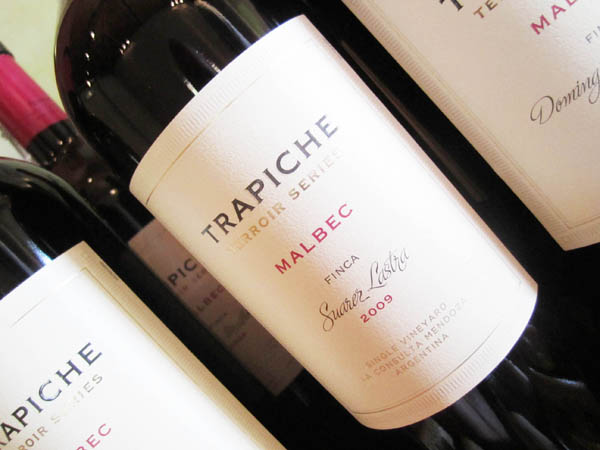Do you ever read a wine review and find yourself feeling vaguely irritated? I do, regularly. Unfortunately, we don’t all share the same sense of taste. I won’t like every wine you recommend, and I’d be deeply surprised if you like all those I do.
Which allows me to introduce the this week’s sheep for the slaughter Argentinian Malbec. (For those readers concerned about my religious tendencies, for the purposes of this review I was no Isaiah. Yeah I opened my mouth and swallowed mightily.)
[related_content slugs=”a-primer-on-pinot-noir,chardonnay-all-is-not-lost,the-je-ne-sais-quoi-of-french-white-wines” description=”More from James Romanow” position=”right”]
Last year I thought Argentinian Malbec market was becoming overheated. When a country and grape get too popular, producers make money. People see the cash and pile in; money flow gets tighter so wine gets extruded at an ever more hectic pace while quality plummets.
Since then, the market for Argentina has become even hotter, and while the finished wine seems to have stabilized a bit, I did find two corked wines (out of 12) in my recent mass sampling, which leads me to the same conclusion. There shouldn’t be that high a hit rate in this small a sample.
The most curious part of the whole business is the big wineries’ entry level wines are more than holding their quality. More than that, I think the inexpensive wines have actually improved.
This is unusual. Normally these wines serve as canaries. When a wine is oversold the crop is extremely valuable; and the wine made from it becomes a grotesque exaggeration of the varietal. In Argentina the reverse appears to be happening. I presume the bigger producers have so much money they can invest in their brands.
The cheaper wines in the sample were uniformly dark this year, indicating a higher standard density in the glass. The wines also seemed remarkably uniform in viscosity, another good sign. I’d guess this means vineyard management and winemaking have improved.
The mid-market wines that sell on the prairies for $15 to $25, are another story. While some of the producers continue to make the same solid wines they always make, any number of new entrants, boutique wine makers, have entered the game and their wines vary from excellent to something better off sold to companies in the business of filling bulk tankers for export.
My native cynicism will prevent me from pursuing Malbec (although I’ll buy other Argentinian varietals). When I do buy the stuff, it will likely be either the more expensive labels or the cheapest. Most of the Canadian world disagrees with me, finding enormous value and comfort in Argentinian reds. Here are the wines that stood out in the tasting as having delivering the best bang for the buck.
My favourite wines of this tasting were the Trapiche Broquel and the Norton Barrel Select. The wines showed more backbone, particularly the Broquel than the rest of the crowd.
Broquel had a nice earthy bouquet, a striking palate with great acidity good fruit and solid tannins. The finish was milder than I hoped, but the wine was still worth buying.
Norton Barrel Select is a name new to me other than theoretically (they’re a good sized exporter). As dark as Broquel in colour, their bouquet was still earthy but a bit spicier (cloves) and the palate was balanced with soft tannins and a very light finish.
Don David is a reserve label from the ever-reliable Michel Torino. As dark as the first two wines in the glass – all of these wines, even the least expensive are so crimson as to be black – it seemed more viscous. However it tasted lighter with better fruit and a slightly acidic lift. The only reason I didnít like it as much as the first two, the tannins were a touch soft for my palate.
Santa Julia Organica was ever so slightly lighter than the above wines in colour but still plenty dark enough. The nose was also lighter, and the palate fruity, with great acidity and a little herbs. It also, alone of all these wines, had a definite mineral finish, albeit a little sweet.
This wine will doubtless appeal to younger wine drinkers and fans of the modern desire for a sweet finish; I’d have preferred a little more backbone. However the quality of the wine is high enough I’ll be looking for other wines from the winery.
Las Moras (formerly Finca Las Moras) has been on the shelves here for at least a decade, and deserve much of the credit for the popularity of Malbec. They specialize in good pizza wines. Light in colour, with a nicely acidic palate this is a great cheap wine. If your budget is constrained, I’d pick this one up.
Trapiche Broquel, Argentina 2009. $18.95 ****
Norton Barrel Select, Argentina 2009. $14.24 ****
Don David Malbec Reserve, Argentina 2009. $14.30 ****
Santa Julia Organic Malbec, Argentina 2009. $18.95 ****
Las Moras Malbec, Argentina, 2010 $9.95 ****
___
James Romanow writes about Wine and all things Boozy for the Spectator Tribune. Follow him @drbooze
Follow us: @SpectatorTrib
